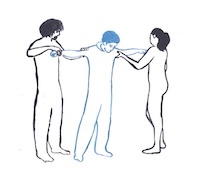
Resonating identification photographs: longing for possibilities within and beyond the border regime's visual framing
Abstract
Unauthorised border crossings are probably the most mediatised of all illegal(ised) human activities. Images of people moving across the Mediterranean on boats or on foot have become iconic of how we have come to understand the social phenomenon of ‘illegal migration’ in Southern Europe. At the same time people who cross borders create specific relationships to the images that are produced of them by the states involved before, during and after the crossing. Identification photographs for passports and permits of stay become charged with particular “affective frequencies” (Campt 2017) in the context of unauthorised border crossings and legalisation. This paper examines the existential and affective relationship that Mohamed Khamis, a previously undocumented Egyptian migrant establishes with such governmentalised images of himself during the process of legalisation initiated by the 2012 amnesty in Italy. Collaborative filmmaking, animation and performance provide the ethnographic context through which our research has attempted to trace the “resonating frequencies” that are enclosed in the border regime’s visual framings. This contribution contests for co-creative image making as an epistemological practice that attunes anthropology to ways of listening to the socio-political and existential possibilities contained in images that both enable and disable futures of mobility into being.
Keywords
border spectacle; Tina Campt; affective frequencies; co-creative ethnography; legalization; refusal
Full Text:
PDFDOI: http://dx.doi.org/10.12835/ve2024.2-172
Refbacks
- There are currently no refbacks.
ISSN Print 2499-9288
ISSN Online 2281-1605
Publisher Edizioni Museo Pasqualino
Patronage University of Basilicata, Italy
Web Salvo Leo
Periodico registrato presso il Tribunale di Palermo con numero di registrazione 1/2023


